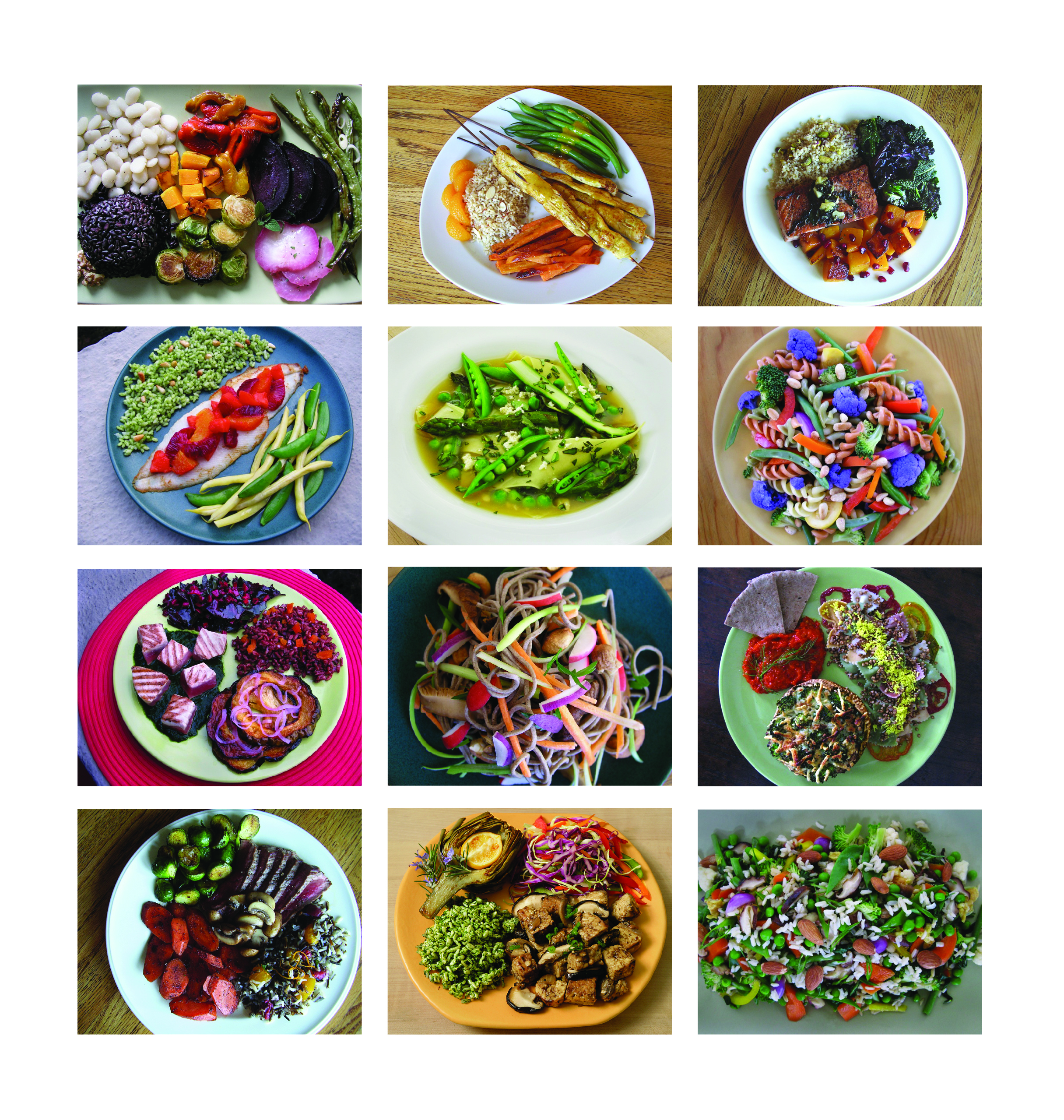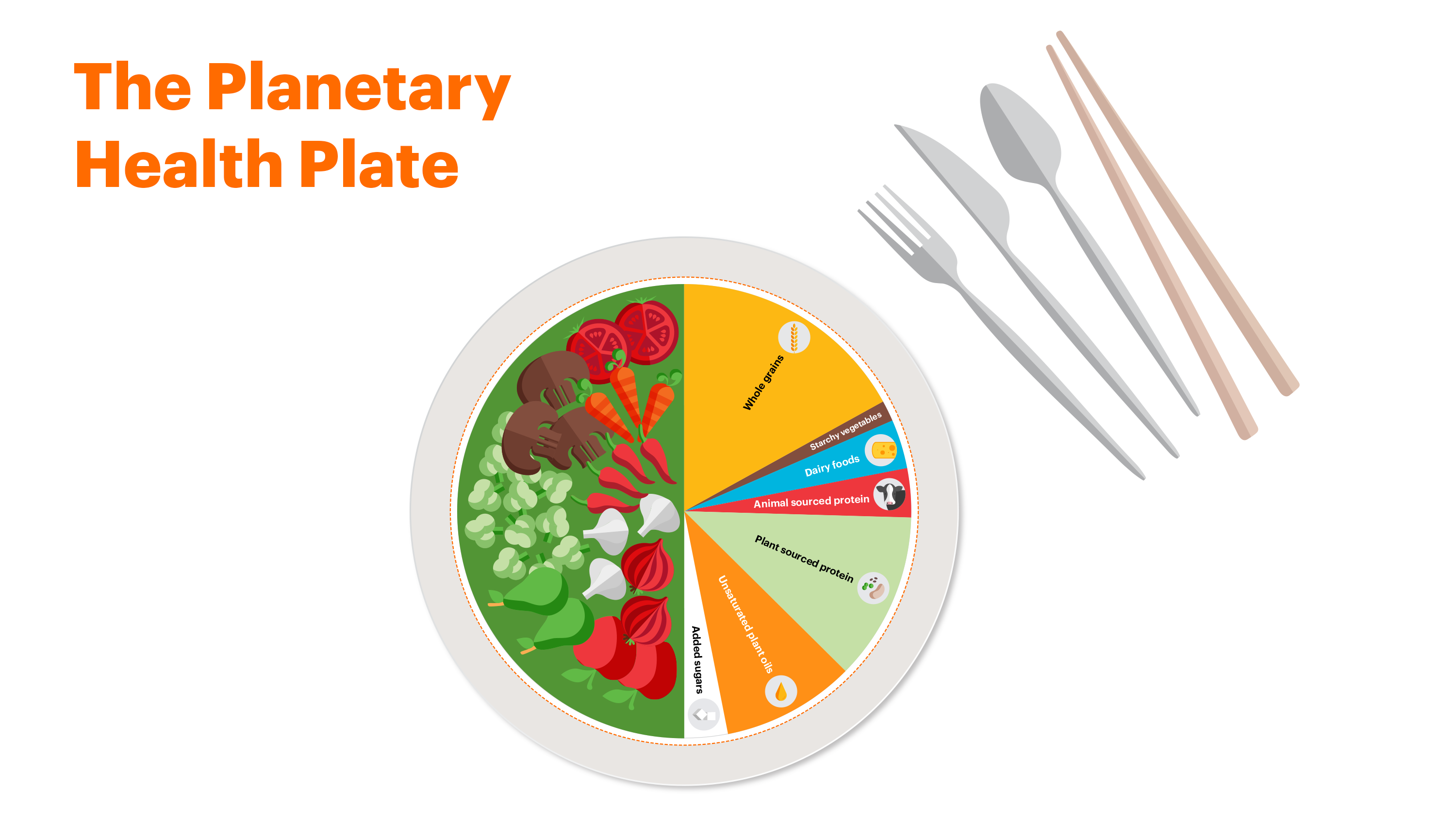More than thirty scientists and experts from sixteen countries have recently published a report in the medical journal The EAT-Lancet Commission titled ‘Food in the Anthropocene’. IFOAM – Organics International welcomes this report and in particular the fact that it goes beyond a narrow productivity perspective to looking at how we can transition to healthy diets for all, within planetary boundaries. Furthermore, we echo its call for a ‘Great Food Transformation’, a global shift to healthy diets from sustainable food systems in order to achieve the Sustainable Development Goals (SDGs) and the goals of the Paris Agreement.
Food systems have the potential to nurture human health and support environmental sustainability, however, our current trajectories threaten both. The EAT–Lancet Commission addresses the need to nourish a growing global population with a healthy diet while also defining sustainable food systems that will minimise damage to our planet.
Healthy Diets from Sustainable Food Systems
The report draws our attention to the inextricable link diets have with human health and environmental sustainability i.e. healthy dietary patterns need to bring large reductions in food loss and waste as well as major improvements to food production practices.
The authors make it clear from the outset what they stand for and what the Great Food Transformation is meant to achieve, namely, re-orienting agricultural priorities from producing high quantities of food to producing healthy food.
Making a highly needed move away from the yield-focussed approach still prevalent in global agricultural development, their rationale is quite elaborate, ‘Production should focus on a diverse range of nutritious foods from biodiversity-enhancing food production systems rather than increased volume of a few crops, most of which are used for animal production.’
So, what is this sustainable agriculture they refer to where food is produced in harmony with nature and in line with the expectations of the Sustainable Development Goal on Zero Hunger?
The Commission names a few practices including organic agriculture and agroecology. In addition, they demand a universal definition of sustainable food production with a system-wide assessment of the environmental effects of a comprehensive set of parameters at various levels, so that we can consistently meet sustainability criteria at local and global levels.
When discussing nutrients in these systems, the authors adopt the foundation of organic agriculture, emphasizing the importance of closing cycles in global food production, recycling nitrogen and phosphorus within food systems, keeping it out of the biosphere, and decreasing environmental effects by reducing total global need for synthesis of new nitrogen and phosphorus fertilisers, using nitrogen-fixing cover crops or crop varieties with large root mass, rotational grazing, and crop residue management instead.
Hidden Costs of Current Food Systems
Taking a comprehensive approach, the report also touches upon the economics of food systems. The authors call for a recognition of the true cost of food including things like the environmental impacts of petroleum-based fertilizers and pesticides or the effects of soil degradation, water pollution, climate change, and the obesity epidemic. These are all hidden costs to the natural environment and human health in our current food system for which to some extent we are already paying for e.g. in the form of health insurance.
The UN Food and Agriculture Organization (FAO) estimates that the hidden annual environmental cost of world food production totals USD 2.1 trillion. The hidden social costs are estimated to be even higher, at USD 2.7 trillion. As the report clearly points out, taxes and subsidies should encourage healthy and sustainable diets.
Polices for Sustainable Food Systems
The report states the need for tough policy interventions including laws, fiscal measures, subsidies and penalties, trade reconfiguration, and other economic and structural measures. This would mean the elimination of all perverse subsidies that maintain industrial agriculture and food systems including a significant portion of the EU’s Common Agricultural Policy. To facilitate this, the authors propose a new international convention with a full set of global institutions on sustainable food systems.
What should new policies aim for? The Commission makes their point very clear by recommending a new, universal healthy reference diet largely consisting of vegetables, fruits, whole grains, legumes, nuts and unsaturated oils, a low-to-moderate amount of seafood and poultry, and very little red meat, processed meat, added sugar, refined grains, and starchy vegetables. The quantitative description of this proposed diet has sparked somewhat heated debates among nutritionists and food systems experts around the globe, with concerns voiced on how scientifically robust the propositions actually are.
The Role of Livestock
Although the report primarily emphasizes the environmental pressures and adverse health effects caused by animal production, the authors point out that ‘in some contexts, animal production can also be essential for supporting livelihoods, grassland ecosystem services, poverty alleviation, and benefits of nutritional status’ and bring the example of sub-Saharan Africa, where ‘promotion of animal source foods for children, including livestock products, can improve dietary quality, micronutrient intake, nutrient status, and overall health’.
Perhaps the ecological chain positively connected with the presence of farm animals could have been emphasized better thus addressing the livestock sector as part of the solution and not the problem. The Commission did though express openness for further debates on the matter.
Opportunity for Change
In terms of what changes to sustainable diets and production systems actually mean, a recent article published in Nature Communications titled “Strategies for feeding the world more sustainably with organic agriculture” draws similar conclusions i.e. reducing food-competing feed by 100% and food wastage by 50% results in improvements along all environmental indicators even with a conversion to 100% organic management.
This clearly means severe cuts in production and consumption of animal products. The good news is that we can do it without extremes, 60% organic agriculture, 25% food wastage reduction and 50% food-competing feed reduction would deliver a sustainable food system.
About EAT-Lancet Commission Report
Whether the diet proposed in the EAT-Lancet report manages to strike the right balance between health and sustainability at a global scale remains to be seen. What we hope is that it will be as successful in triggering discussions around sustainable diets and making this an inevitable topic on the global agenda as Lancet itself was regarding nutrition with their landmark series of papers on maternal and child undernutrition a couple of years ago.
Intensification of agriculture has greatly increased food availability over recent decades but it has also had huge adverse environmental impacts. Feeding 9-10 billion people in 2050 with increased per-capita consumption of animal products will further exacerbate this. A transformation to healthy diets from sustainable food systems is vital.
This report shows that the potential impact on the planet from changing diets can be enormous. Our daily dietary choices all come with an opportunity, not just for us, our well-being, our health, our regions, and their economies. They can also have a significant impact on how we deal with climate change and biodiversity loss and help sustainable farmers earn a decent living.









